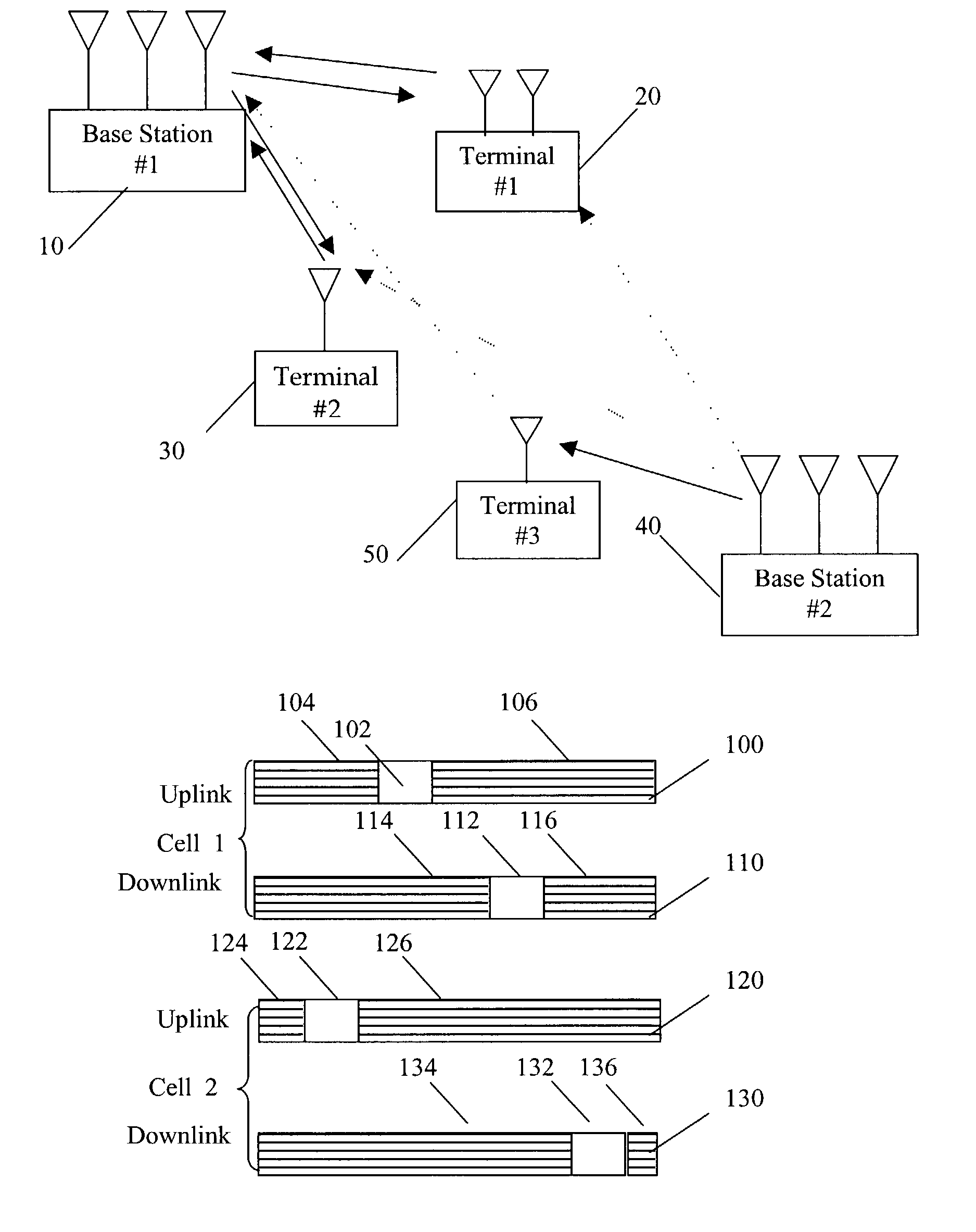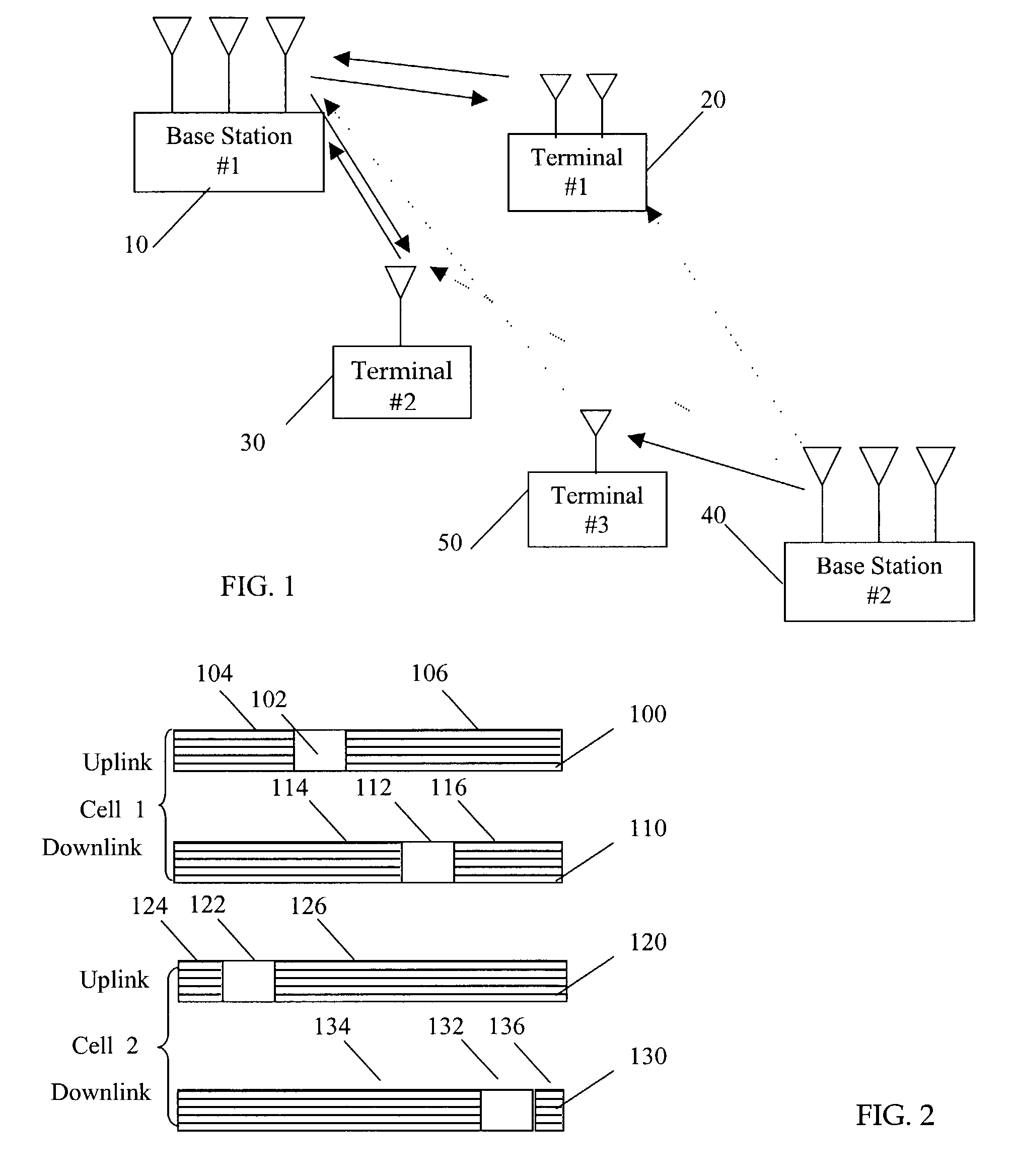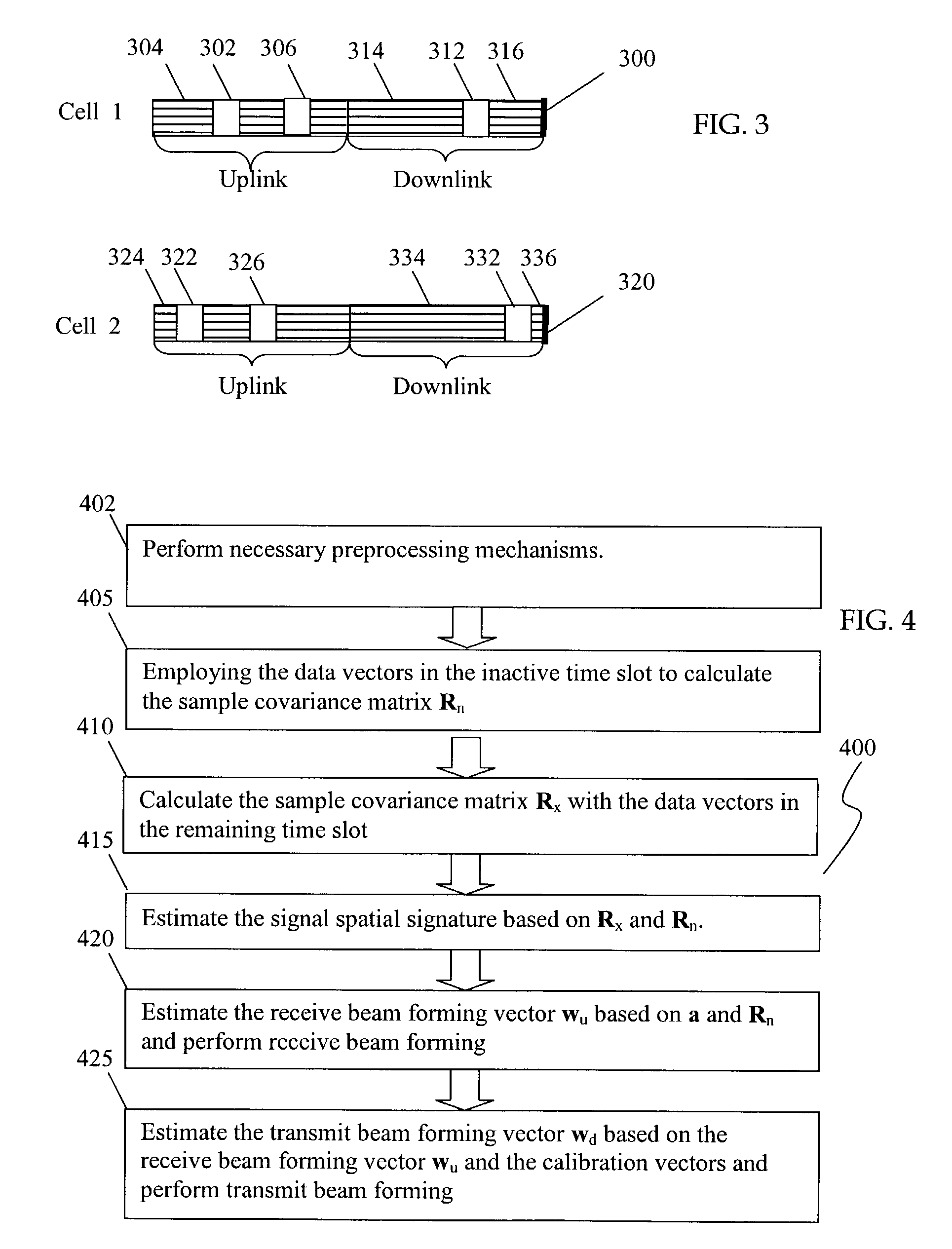Method and system for multi-cell interference reduction in a wireless communication system
a wireless communication system and multi-cell technology, applied in the field of wireless communication systems, can solve the problems of insufficient high signal to interference ratio and noise ratio to ensure the correct detection of the signals of interest or the underlying digital symbols, algorithms may not be so effective, and algorithms are usually computationally intensive, so as to improve the accuracy of interfering signals, accurately detect the characteristics of interfering signals, and accurately estimate the interfering signals
- Summary
- Abstract
- Description
- Claims
- Application Information
AI Technical Summary
Benefits of technology
Problems solved by technology
Method used
Image
Examples
Embodiment Construction
[0012]The present disclosure introduces a unique inactive time slot / window for each cell in each transmit frame for either uplink or downlink or both such that only the interferences generated from other cells will show in the inactive time slot. The characteristics of all interfering signals are thus captured and used for canceling such signals in the remaining portion of the transmit frame. As opposed to the inactive time slot, the remaining portion within the transmit frame may also be referred to as the active window since wireless communications are actively carried out as normal.
[0013]FIG. 1 shows a simplified multi-cell wireless communication system wherein a call control and management device such as a first base station 10 communicates with its terminals 20 and 30, and a second base station 40 using the same or overlapping frequency band communicates with its own terminals such as terminal 50. Whether the territory / cell covered by the first base station is immediately adjac...
PUM
 Login to View More
Login to View More Abstract
Description
Claims
Application Information
 Login to View More
Login to View More - R&D
- Intellectual Property
- Life Sciences
- Materials
- Tech Scout
- Unparalleled Data Quality
- Higher Quality Content
- 60% Fewer Hallucinations
Browse by: Latest US Patents, China's latest patents, Technical Efficacy Thesaurus, Application Domain, Technology Topic, Popular Technical Reports.
© 2025 PatSnap. All rights reserved.Legal|Privacy policy|Modern Slavery Act Transparency Statement|Sitemap|About US| Contact US: help@patsnap.com



